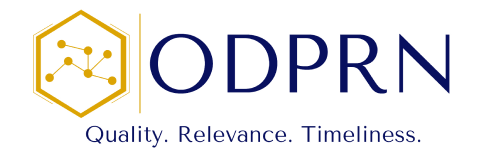The ODPRN has completed a drug class review on triptans for the treatment of migraines. The final reports and a summary of the research findings and reimbursement options are available below.
Final Reports and Reimbursement Options
- Consolidated Final Report and Reimbursement Option Recommendations
- Triptan Qualitative Report
- Triptan Environmental Scan Report
- Triptan Pharmacoepidemiology Report
- Triptan Systematic Review Appendices and Systematic Review Report
- Triptan Pharmacoeconomics Report
- Triptan Citizen’s Panel Report
Final Publications
- Access to Triptans for Acute Episodic Migraine: A Qualitative Study
- Triptans for Acute Migraine: A Drug Class Review to Help Inform Policy Decisions
- Public Drug Coverage and Its Impact on Triptan Use Across Canada: A Population-Based Study
- Triptans in the Acute Treatment of Migraine: A Systematic Review and Network Meta-Analysis
- Reimbursement-Based Economics – What Is It and How Can We Use it to Inform Drug Policy Reform?
Click to view the complete infographic for clinicians and patients
Summary of Drug Class Review Findings: Triptans for Migraine Management
Download a PDF of this Research Summary
The Ontario Drug Policy Research Network (ODPRN) assessed the efficacy,safety, accessibility and cost of triptans as part of a drug class review to provide recommendations for potential public drug funding changes.
What did we find?
Efficacy
Triptans are effective for migraine relief. Forty-three to 76% of patients experience pain relief at 2 hours;3 to 7 patients must be treated with triptans for one patient to experience this outcome. Most triptans were associated with equal or more favourable results than non-steroidal anti-inflammatory drugs, acetylsalicylic acid, acetaminophen and ergots for 2-hour outcomes.
Accessibility
Rates of triptan use in Ontario are similar to the Canadian average, but Ontario dispenses the lowest volume of publicly-funded triptans in Canada (931 units vs 5,358 units per 100,000 eligible population). Many patients without drug coverage cannot afford triptans due to their high cost. Instead, these patients may be provided samples or prescribed alternative drugs. Physicians may perceive that accessing triptans through application to the Exceptional Access Program (EAP) is a challenge. Expanding coverage of triptans beyond the EAP would potentially increase
publicly-funded triptan use 20-fold, from 1218 to 24,000 Ontarians per year.
Safety
Triptans are generally well tolerated. There is currently no strong evidence of serious adverse events related to triptan use. Frequent use of triptans may lead to medication over-use headache, so use of triptans on 9 days or less per month is typically recommended. Most public drug plans across Canada have placed quantity limits on triptans to curb overuse. Ontario’s public plan, which has no quantity limits, dispenses the highest median quantity of triptans per person annually in Canada.
Cost
Ontario currently spends $1.7 million on triptans annually. Adjusting the EAP criteria to include quantity limits and generics may reduce total triptan costs by approximately 69 to 84%, while expanding the use of triptans through less restrictive public funding models may increase total costs by 139 to 302%.
What do we recommend?
Limited use with quantity limits of 12 doses/month* : Triptans would be removed from EAP and placed under restrictive coverage through an enforced quantity limit of 12 doses per month. Compared to the status quo, this option would increase safety, access and provincial costs.
OR
EAP with quantity limits*: Triptans would remain on EAP with a quantity limit of 12 doses per month. We also recommend revising the EAP criteria to facilitate access. Compared to the status quo, this option would increase safety and decrease provincial costs. Access would only increase if revisions were made to criteria.
*For each option, a 25% generic pricing agreement would be in effect if generics are available
How did we conduct our studies?
The ODPRN conducted a drug class review consisting of multiple studies: a qualitative study to determine the experiences of using and prescribing triptans; a systematic review to determine efficacy and safety; a pharmacoepidemiological analysis to determine patterns of use in Ontario and across Canada; an environmental scan to determine national and international guidelines and public drug coverage models for triptans; and pharmacoeconomic analyses to determine the cost of public drug funding for triptans under different coverage policies.
Final Comprehensive Research Plans
- Comprehensive Research Plan (CRP) Overview
- Triptan Qualitative CRP
- Triptan Environmental Scan CRP
- Triptan Pharmacoepidemiology CRP
- Triptan Systematic Review Appendices CRP
- Triptan Pharmacoeconomics CRP
Any questions? Contact us at info@odprn.ca.
